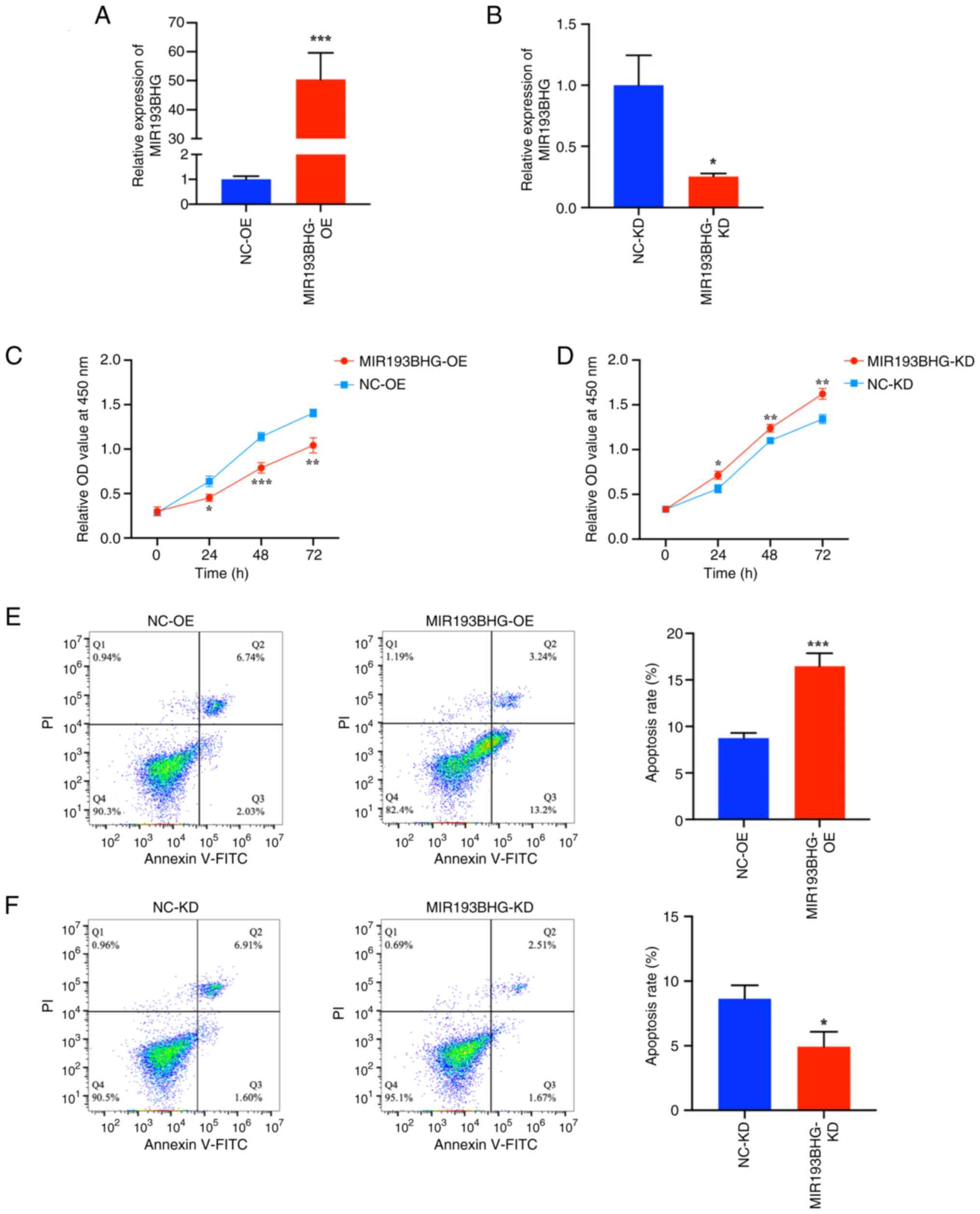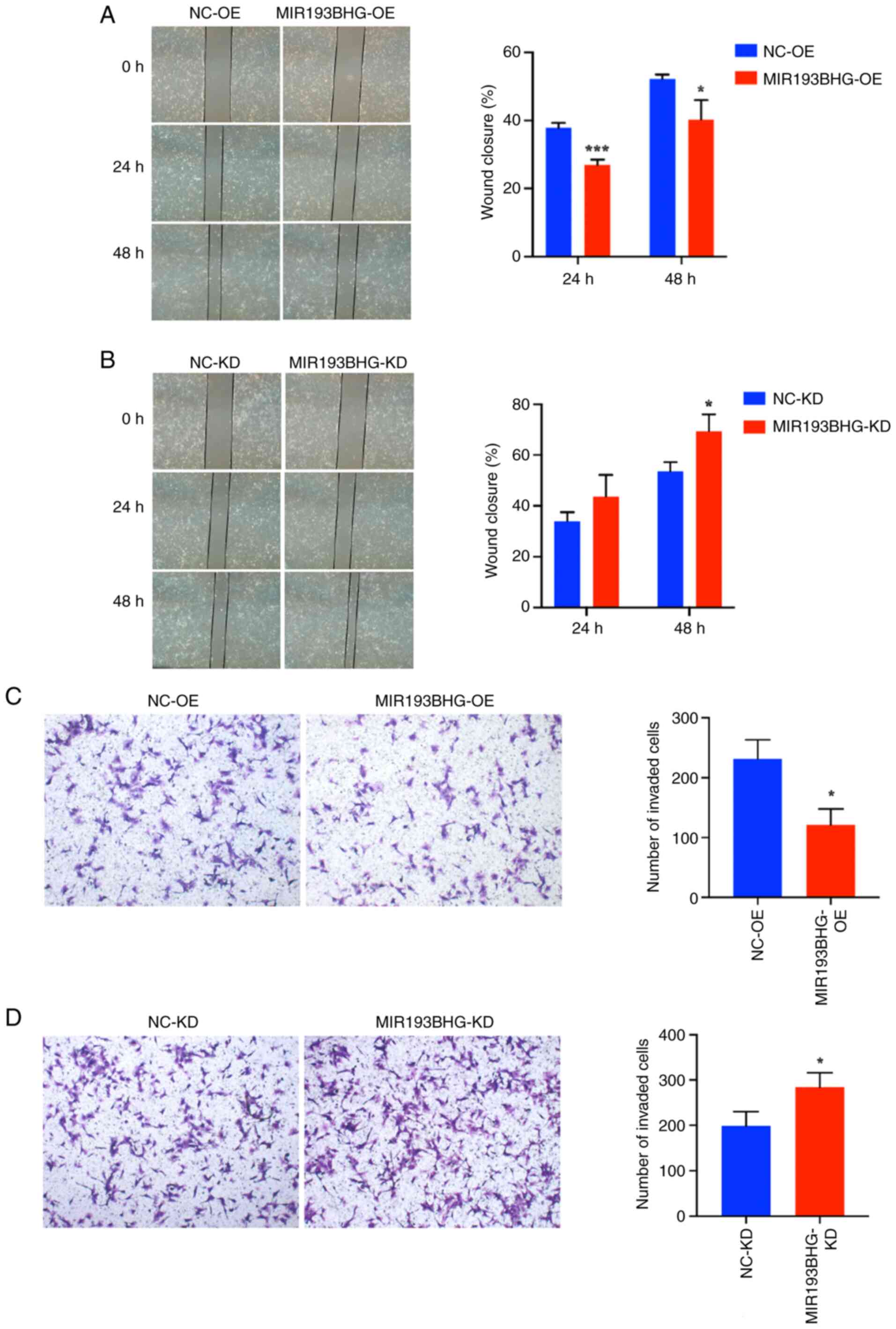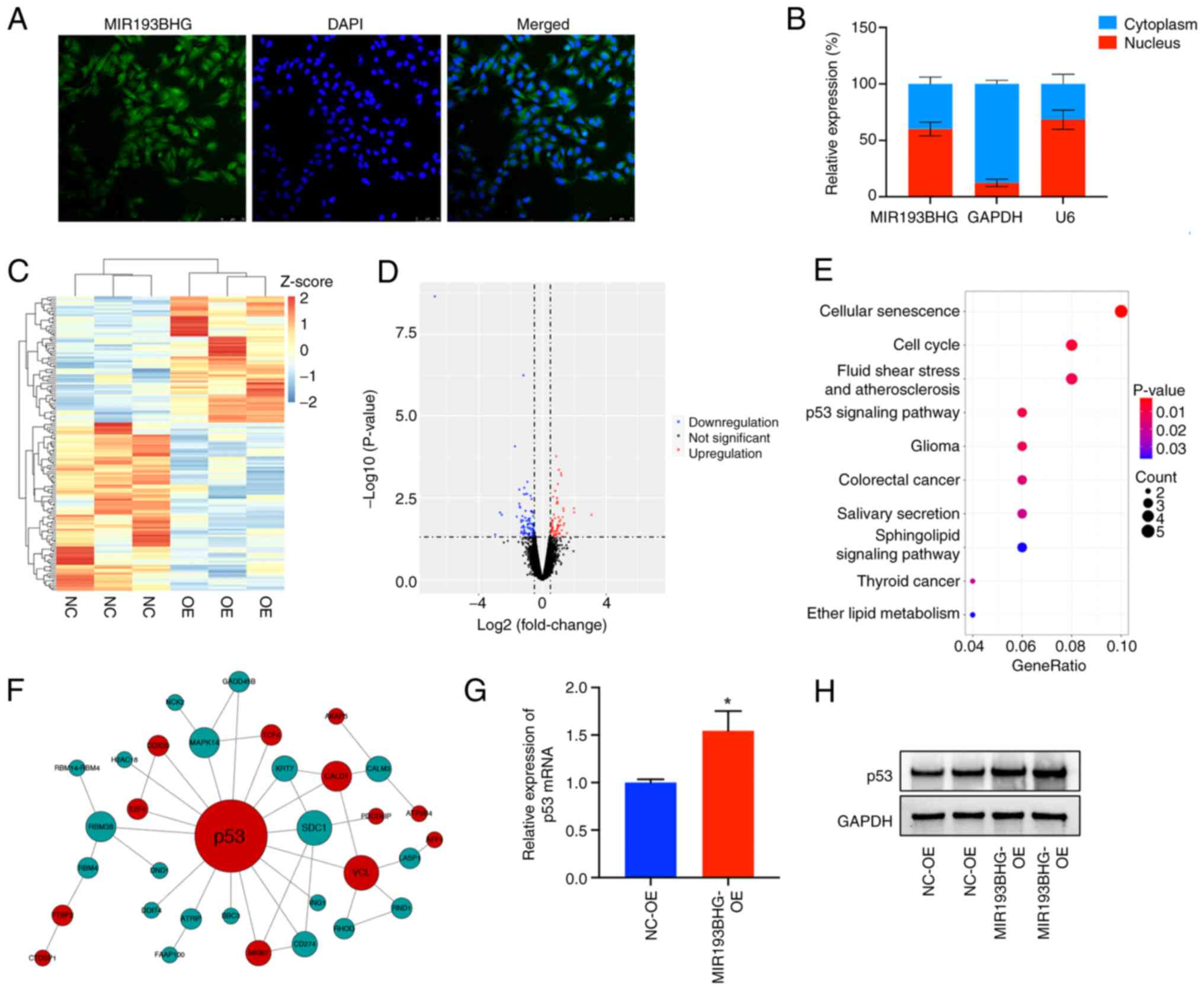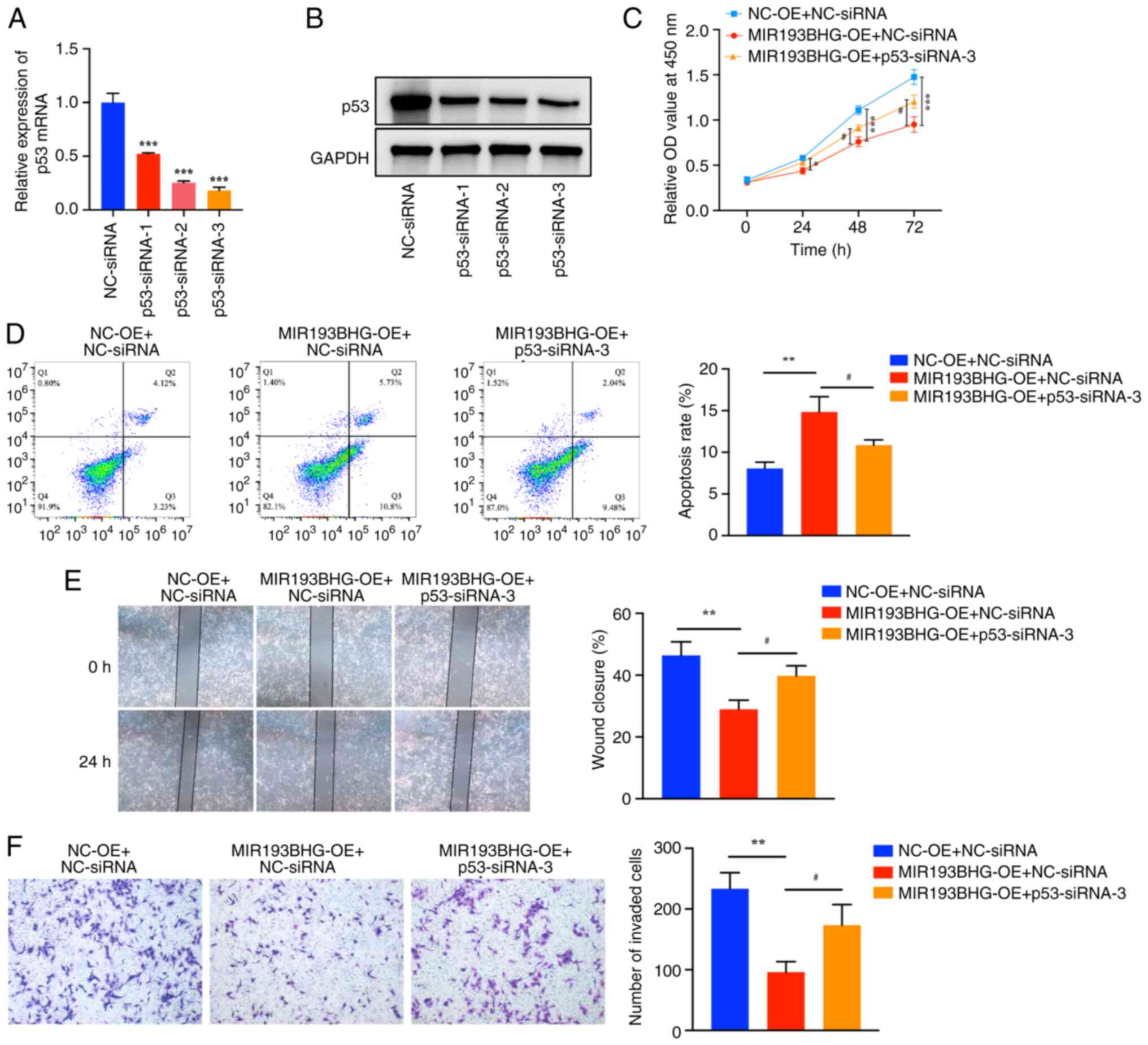|
1
|
Chappell LC, Cluver CA, Kingdom J and Tong
S: Pre-eclampsia. Lancet. 398:341–354. 2021.PubMed/NCBI View Article : Google Scholar
|
|
2
|
No authors listed. Gestational
hypertension and preeclampsia: ACOG practice bulletin summary,
number 222. Obstet Gynecol. 135:1492–1495. 2020.PubMed/NCBI View Article : Google Scholar
|
|
3
|
Jung E, Romero R, Yeo L, Gomez-Lopez N,
Chaemsaithong P, Jaovisidha A, Gotsch F and Erez O: The etiology of
preeclampsia. Am J Obstet Gynecol. 226 (2S):S844–S866.
2022.PubMed/NCBI View Article : Google Scholar
|
|
4
|
Cooke WR, Jiang P, Ji L, Bai J, Jones GD,
Lo YMD, Redman C and Vatish M: Differential 5'-tRNA fragment
expression in circulating preeclampsia syncytiotrophoblast vesicles
drives macrophage inflammation. Hypertension. 81:876–886.
2024.PubMed/NCBI View Article : Google Scholar
|
|
5
|
Wang J, Gao Y, Ren S, Li J, Chen S, Feng
J, He B, Zhou Y and Xuan R: Gut microbiota-derived trimethylamine
N-Oxide: A novel target for the treatment of preeclampsia. Gut
Microbes. 16(2311888)2024.PubMed/NCBI View Article : Google Scholar
|
|
6
|
Li Y, Sang Y, Chang Y, Xu C, Lin Y, Zhang
Y, Chiu PCN, Yeung WSB, Zhou H, Dong N, et al: A galectin-9-driven
CD11chigh decidual macrophage subset suppresses uterine
vascular remodeling in preeclampsia. Circulation. 149:1670–1688.
2024.PubMed/NCBI View Article : Google Scholar
|
|
7
|
Jim B and Karumanchi SA: Preeclampsia:
Pathogenesis, prevention, and long-term complications. Semin
Nephrol. 37:386–397. 2017.PubMed/NCBI View Article : Google Scholar
|
|
8
|
Hod T, Cerdeira AS and Karumanchi SA:
Molecular mechanisms of preeclampsia. Cold Spring Harb Perspect
Med. 5(a023473)2015.PubMed/NCBI View Article : Google Scholar
|
|
9
|
Stein LD: Human genome: End of the
beginning. Nature. 431:915–916. 2004.PubMed/NCBI View
Article : Google Scholar
|
|
10
|
Djebali S, Davis CA, Merkel A, Dobin A,
Lassmann T, Mortazavi A, Tanzer A, Lagarde J, Lin W, Schlesinger F,
et al: Landscape of transcription in human cells. Nature.
489:101–108. 2012.PubMed/NCBI View Article : Google Scholar
|
|
11
|
Dhaka B, Zimmerli M, Hanhart D, Moser MB,
Guillen-Ramirez H, Mishra S, Esposito R, Polidori T, Widmer M,
García-Pérez R, et al: Functional identification of cis-regulatory
long noncoding RNAs at controlled false discovery rates. Nucleic
Acids Res. 52:2821–2835. 2024.PubMed/NCBI View Article : Google Scholar
|
|
12
|
Sun N, Qin S, Zhang L and Liu S: Roles of
noncoding RNAs in preeclampsia. Reprod Biol Endocrinol.
19(100)2021.PubMed/NCBI View Article : Google Scholar
|
|
13
|
Liu SJ, Dang HX, Lim DA, Feng FY and Maher
CA: Long noncoding RNAs in cancer metastasis. Nat Rev Cancer.
21:446–460. 2021.PubMed/NCBI View Article : Google Scholar
|
|
14
|
Zhang Y, He XY, Qin S, Mo HQ, Li X, Wu F,
Zhang J, Li X, Mao L, Peng YQ, et al: Upregulation of PUM1
expression in preeclampsia impairs trophoblast invasion by
negatively regulating the expression of the lncRNA HOTAIR. Mol
Ther. 28:631–641. 2020.PubMed/NCBI View Article : Google Scholar
|
|
15
|
Ponting CP, Oliver PL and Reik W:
Evolution and functions of long noncoding RNAs. Cell. 136:629–641.
2009.PubMed/NCBI View Article : Google Scholar
|
|
16
|
McAninch D, Roberts CT and Bianco-Miotto
T: Mechanistic insight into long noncoding RNAs and the placenta.
Int J Mol Sci. 18(1371)2017.PubMed/NCBI View Article : Google Scholar
|
|
17
|
Statello L, Guo CJ, Chen LL and Huarte M:
Gene regulation by long non-coding RNAs and its biological
functions. Nat Rev Mol Cell Biol. 22:96–118. 2021.PubMed/NCBI View Article : Google Scholar
|
|
18
|
Mirzadeh Azad F, Polignano IL, Proserpio V
and Oliviero S: Long noncoding RNAs in human stemness and
differentiation. Trends Cell Biol. 31:542–555. 2021.PubMed/NCBI View Article : Google Scholar
|
|
19
|
Wu HY, Wang XH, Liu K and Zhang JL: LncRNA
MALAT1 regulates trophoblast cells migration and invasion via
miR-206/IGF-1 axis. Cell Cycle. 19:39–52. 2020.PubMed/NCBI View Article : Google Scholar
|
|
20
|
Guiyu S, Quan N, Ruochen W, Dan W, Bingnan
C, Yuanyua L, Yue B, Feng J, Chong Q and Leilei W: LncRNA-SNX17
promotes HTR-8/SVneo proliferation and invasion through
miR-517a/IGF-1 in the placenta of diabetic macrosomia. Reprod Sci.
29:596–605. 2022.PubMed/NCBI View Article : Google Scholar
|
|
21
|
Zhang Y and Zhang M: lncRNA SNHG14
involved in trophoblast cell proliferation, migration, invasion and
epithelial-mesenchymal transition by targeting miR-330-5p in
preeclampsia. Zygote. 29:108–117. 2021.PubMed/NCBI View Article : Google Scholar
|
|
22
|
Lv H, Tong J, Yang J, Lv S, Li WP, Zhang C
and Chen ZJ: Dysregulated pseudogene HK2P1 may contribute to
preeclampsia as a competing endogenous RNA for hexokinase 2 by
impairing decidualization. Hypertension. 71:648–658.
2018.PubMed/NCBI View Article : Google Scholar
|
|
23
|
Li X, Song Y, Liu F, Liu D, Miao H, Ren J,
Xu J, Ding L, Hu Y, Wang Z, et al: Long non-coding RNA MALAT1
promotes proliferation, angiogenesis, and immunosuppressive
properties of mesenchymal stem cells by inducing VEGF and IDO. J
Cell Biochem. 118:2780–2791. 2017.PubMed/NCBI View Article : Google Scholar
|
|
24
|
Zhang Z, Wang P, Zhang L, Huang C, Gao J,
Li Y and Yang B: Identification of key genes and long noncoding
RNA-associated competing endogenous RNA (ceRNA) networks in
early-onset preeclampsia. Biomed Res Int.
2020(1673486)2020.PubMed/NCBI View Article : Google Scholar
|
|
25
|
Wu X, Niculite CM, Preda MB, Rossi A,
Tebaldi T, Butoi E, White MK, Tudoran OM, Petrusca DN, Jannasch AS,
et al: Regulation of cellular sterol homeostasis by the oxygen
responsive noncoding RNA lincNORS. Nat Commun.
11(4755)2020.PubMed/NCBI View Article : Google Scholar
|
|
26
|
Livak KJ and Schmittgen TD: Analysis of
relative gene expression data using real-time quantitative PCR and
the 2(-Delta Delta C(T)) method. Methods. 25:402–408.
2001.PubMed/NCBI View Article : Google Scholar
|
|
27
|
Didychuk AL, Butcher SE and Brow DA: The
life of U6 small nuclear RNA, from cradle to grave. RNA.
24:437–460. 2018.PubMed/NCBI View Article : Google Scholar
|
|
28
|
Sun M, Gao J, Meng T, Liu S, Chen H, Liu
Q, Xing X, Zhao C and Luo Y: Cyclin G2 upregulation impairs
migration, invasion, and network formation through RNF123/Dvl2/JNK
signaling in the trophoblast cell line HTR8/SVneo, a possible role
in preeclampsia. FASEB J. 35(e21169)2021.PubMed/NCBI View Article : Google Scholar
|
|
29
|
Chen Q, Jiang S, Liu H, Gao Y, Yang X, Ren
Z, Gao Y, Xiao L, Hu H, Yu Y, et al: Association of lncRNA
SH3PXD2A-AS1 with preeclampsia and its function in invasion and
migration of placental trophoblast cells. Cell Death Dis.
11(583)2020.PubMed/NCBI View Article : Google Scholar
|
|
30
|
Peng WX, Koirala P and Mo YY:
LncRNA-mediated regulation of cell signaling in cancer. Oncogene.
36:5661–5667. 2017.PubMed/NCBI View Article : Google Scholar
|
|
31
|
Yaghoobi A, Rezaee M, Behnoush AH, Khalaji
A, Mafi A, Houjaghan AK, Masoudkabir F and Pahlavan S: Role of long
noncoding RNAs in pathological cardiac remodeling after myocardial
infarction: An emerging insight into molecular mechanisms and
therapeutic potential. Biomed Pharmacother.
172(116248)2024.PubMed/NCBI View Article : Google Scholar
|
|
32
|
Balusu S, Horré K, Thrupp N, Craessaerts
K, Snellinx A, Serneels L, T'Syen D, Chrysidou I, Arranz AM,
Sierksma A, et al: MEG3 activates necroptosis in human neuron
xenografts modeling Alzheimer's disease. Science. 381:1176–1182.
2023.PubMed/NCBI View Article : Google Scholar
|
|
33
|
Guo J, Zheng W, Liu Y, Zhou M, Shi Y, Lei
M, Zhang C and Liu Z: Long non-coding RNA DLX6-AS1 is the key
mediator of glomerular podocyte injury and albuminuria in diabetic
nephropathy by targeting the miR-346/GSK-3β signaling pathway. Cell
Death Dis. 14(172)2023.PubMed/NCBI View Article : Google Scholar
|
|
34
|
Wang L, Shi L, Zhou B, Hong L, Gong H and
Wu D: METTL3-mediated lncRNA HOXD-AS1 stability regulates
inflammation, and the migration and invasion of trophoblast cells
via the miR-135a/β-TRCP axis. Noncoding RNA Res. 9:12–23.
2023.PubMed/NCBI View Article : Google Scholar
|
|
35
|
Tang X, Cao Y, Wu D, Sun L and Xu Y:
Downregulated DUXAP8 lncRNA impedes trophoblast cell proliferation
and migration by epigenetically upregulating TFPI2 expression.
Reprod Biol Endocrinol. 21(58)2023.PubMed/NCBI View Article : Google Scholar
|
|
36
|
Dong N, Li D, Cai H, Shi L and Huang L:
Expression of lncRNA MIR193BHG in serum of preeclampsia patients
and its clinical significance. J Gynecol Obstet Hum Reprod.
51(102357)2022.PubMed/NCBI View Article : Google Scholar
|
|
37
|
Postepska-Igielska A, Giwojna A,
Gasri-Plotnitsky L, Schmitt N, Dold A, Ginsberg D and Grummt I:
LncRNA Khps1 regulates expression of the proto-oncogene SPHK1 via
triplex-mediated changes in chromatin structure. Mol Cell.
60:626–636. 2015.PubMed/NCBI View Article : Google Scholar
|
|
38
|
Xia K, Yu LY, Huang XQ, Zhao ZH and Liu J:
Epigenetic regulation by long noncoding RNAs in osteo-/adipogenic
differentiation of mesenchymal stromal cells and degenerative bone
diseases. World J Stem Cells. 14:92–103. 2022.PubMed/NCBI View Article : Google Scholar
|
|
39
|
Zhao S, Heng N, Weldegebriall Sahlu B,
Wang H and Zhu H: Long noncoding RNAs: Recent insights into their
role in male infertility and their potential as biomarkers and
therapeutic targets. Int J Mol Sci. 22(13579)2021.PubMed/NCBI View Article : Google Scholar
|
|
40
|
Graf J and Kretz M: From structure to
function: Route to understanding lncRNA mechanism. Bioessays.
42(e2000027)2020.PubMed/NCBI View Article : Google Scholar
|
|
41
|
Niyaz M, Ainiwaer J, Abudureheman A, Zhang
L, Sheyhidin I, Turhong A, Cai R, Hou Z and Awut E: Association
between TP53 gene deletion and protein expression in esophageal
squamous cell carcinoma and its prognostic significance. Oncol
Lett. 20:1855–1865. 2020.PubMed/NCBI View Article : Google Scholar
|
|
42
|
Zhang A, Xu M and Mo YY: Role of the
lncRNA-p53 regulatory network in cancer. J Mol Cell Biol.
6:181–191. 2014.PubMed/NCBI View Article : Google Scholar
|
|
43
|
Sharp AN, Heazell AE, Baczyk D, Dunk CE,
Lacey HA, Jones CJ, Perkins JE, Kingdom JC, Baker PN and Crocker
IP: Preeclampsia is associated with alterations in the p53-pathway
in villous trophoblast. PLoS One. 9(e87621)2014.PubMed/NCBI View Article : Google Scholar
|
|
44
|
Gao Q, Zhu X, Chen J, Mao C, Zhang L and
Xu Z: Upregulation of P53 promoted G1 arrest and apoptosis in human
umbilical cord vein endothelial cells from preeclampsia. J
Hypertens. 34:1380–1388. 2016.PubMed/NCBI View Article : Google Scholar
|
|
45
|
Fang Y, Zhang J, Zhu D, Mei Q, Liao T,
Cheng H, He Y, Cao Y and Wei Z: MANF promotes unexplained recurrent
miscarriages by interacting with NPM1 and downregulating
trophoblast cell migration and invasion. Int J Biol Sci.
20:296–311. 2024.PubMed/NCBI View Article : Google Scholar
|
|
46
|
Bao D, Zhuang C, Jiao Y and Yang L: The
possible involvement of circRNA DMNT1/p53/JAK/STAT in gestational
diabetes mellitus and preeclampsia. Cell Death Discov.
8(121)2022.PubMed/NCBI View Article : Google Scholar
|
|
47
|
Mo HQ, Tian FJ, Ma XL, Zhang YC, Zhang CX,
Zeng WH, Zhang Y and Lin Y: PDIA3 regulates trophoblast apoptosis
and proliferation in preeclampsia via the MDM2/p53 pathway.
Reproduction. 160:293–305. 2020.PubMed/NCBI View Article : Google Scholar
|
|
48
|
Liu C, Hu Y, Wang Z, Pan H, Ren Y, Li X,
Liu Z and Gao H: The downregulation of placental lumican promotes
the progression of preeclampsia. Reprod Sci. 28:3147–3154.
2021.PubMed/NCBI View Article : Google Scholar
|
|
49
|
Qin G, Tu X, Li H, Cao P, Chen X, Song J,
Han H, Li Y, Guo B, Yang L, et al: Long noncoding RNA
p53-stabilizing and activating RNA promotes p53 signaling by
inhibiting heterogeneous nuclear ribonucleoprotein K deSUMOylation
and suppresses hepatocellular carcinoma. Hepatology. 71:112–129.
2020.PubMed/NCBI View Article : Google Scholar
|
|
50
|
Chen Y, Hao Q, Wang S, Cao M, Huang Y,
Weng X, Wang J, Zhang Z, He X, Lu H and Zhou X: Inactivation of the
tumor suppressor p53 by long noncoding RNA RMRP. Proc Natl Acad Sci
USA. 118(e2026813118)2021.PubMed/NCBI View Article : Google Scholar
|
|
51
|
Song C, Xiong Y, Liao W, Meng L and Yang
S: Long noncoding RNA ATB participates in the development of renal
cell carcinoma by downregulating p53 via binding to DNMT1. J Cell
Physiol. 234:12910–12917. 2019.PubMed/NCBI View Article : Google Scholar
|
|
52
|
Tang R, Mei X, Wang YC, Cui XB, Zhang G,
Li W and Chen SY: LncRNA GAS5 regulates vascular smooth muscle cell
cycle arrest and apoptosis via p53 pathway. Biochim Biophys Acta
Mol Basis Dis. 1865:2516–2525. 2019.PubMed/NCBI View Article : Google Scholar
|
|
53
|
Li X, Zhao J, Geng J, Chen F, Wei Z, Liu
C, Zhang X, Li Q, Zhang J, Gao L, et al: Long non-coding RNA MEG3
knockdown attenuates endoplasmic reticulum stress-mediated
apoptosis by targeting p53 following myocardial infarction. J Cell
Mol Med. 23:8369–8380. 2019.PubMed/NCBI View Article : Google Scholar
|
|
54
|
Stein Y, Rotter V and Aloni-Grinstein R:
Gain-of-function mutant p53: All the roads lead to tumorigenesis.
Int J Mol Sci. 20(6197)2019.PubMed/NCBI View Article : Google Scholar
|
|
55
|
Vousden KH and Prives C: Blinded by the
light: The growing complexity of p53. Cell. 137:413–431.
2009.PubMed/NCBI View Article : Google Scholar
|













